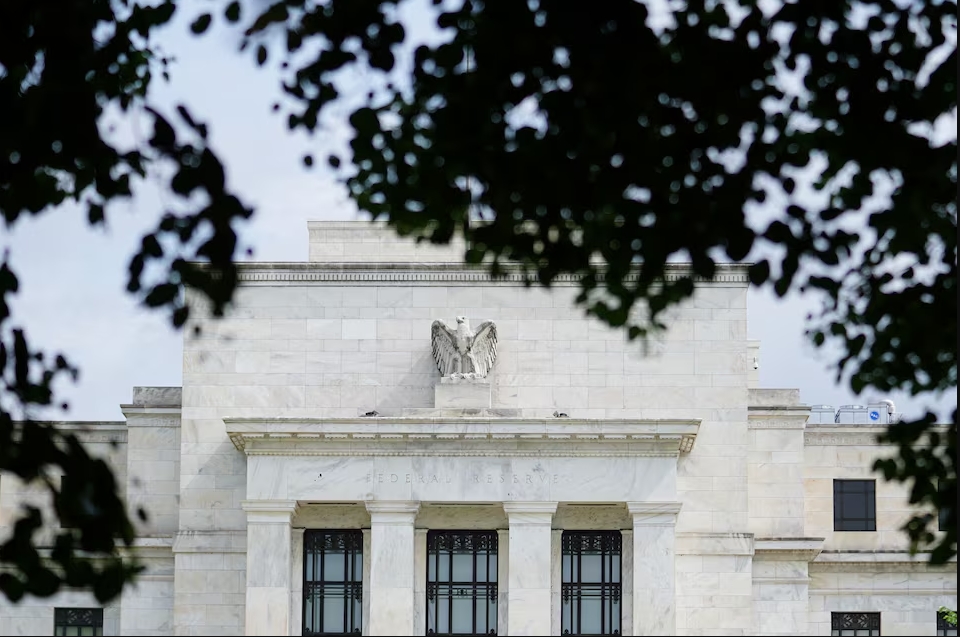Fed Likely to Cut Rates, But Economic Outlook Clouded by Trump’s Return to Office
WASHINGTON, Nov 7 (Reuters) – The U.S. Federal Reserve is widely expected to reduce its key policy rate by a quarter percentage point at the end of its meeting on Thursday, a move that might feel like a footnote given the new economic uncertainties created by Donald Trump’s return to the White House.
Trump’s victory in Tuesday’s election, coupled with the possibility of Republican control over both chambers of Congress, opens the door to a raft of potential policy changes—ranging from tariffs to tax cuts to immigration restrictions—that could significantly alter the economic landscape the Fed had been preparing for. With these shifts in mind, predicting the outlook for economic growth and inflation has become far more complex.
Though it may take months for these policy proposals to evolve and make their way through Congress, financial markets are already reacting. Bond yields have risen sharply in response to the election results, and investors now expect the Fed to ease interest rate cuts more cautiously than previously forecast. The likelihood of a new economic regime under Trump could mean higher federal deficits, increased growth, and rising inflation in the short term, though longer-term risks remain uncertain.
As Steven Blitz, chief U.S. economist at TSLombard, put it: “The direction of budget deficits, tariffs, and other policy shifts could eventually become a problem the Fed will have to manage.” He added that the central bank, after having had room to raise rates in a booming economy to combat inflation, might now find itself playing catch-up with the administration’s evolving policies, all while trying to balance rising prices with a low unemployment rate.
A Rocky History with the Fed
Trump’s relationship with the Federal Reserve was contentious during his first term. He was vocal in his criticism of Fed Chair Jerome Powell, even calling him an “enemy” for his rate hikes, which Trump believed were unnecessarily stifling economic growth. That tension is expected to resurface as Trump returns to office, with the central bank facing a more complicated backdrop of trade policies, fiscal changes, and global economic pressures.
Though Trump initially appointed Powell as Fed Chair in 2018, Powell was reappointed by President Biden for a second term, which runs through May 2026. Powell has expressed his intention to complete his tenure, but how he navigates the economic challenges presented by Trump’s policies will be closely scrutinized.
A Murkier Economic Outlook
The Fed’s anticipated rate cut on Thursday, likely bringing the benchmark rate to a range of 4.5% to 4.75%, is a continuation of its previous easing in September. However, there is growing uncertainty about the Fed’s next moves. Markets now predict the central bank will end its rate-cut cycle as soon as mid-2025, with rates expected to settle between 3.75% and 4%. This marks a sharp divergence from the Fed’s September forecast of a 2.9% target for the policy rate by the end of 2024.
Under Trump’s first term, the Fed raised rates in 2018 in response to the economic boost from his tax cuts, but those hikes came with the unintended consequence of rising inflation, which the central bank needed to address. By 2019, the Fed had reversed course, cutting rates as trade wars and tariffs weakened global growth prospects.
Now, with a second Trump administration potentially reintroducing tariff policies and tax cuts, the Fed faces new challenges in navigating the economic fallout. The exact impact of these measures—whether tariffs will disrupt global supply chains or tax cuts will influence consumer demand and federal deficits—is still unclear. Additionally, Trump’s focus on combating inflation during his campaign means the Fed may face pressure to keep inflation under control, even as it contends with the broader economic risks posed by his policies.
A Wait-and-See Approach
While the Fed is expected to cut rates on Thursday as planned, the future remains highly uncertain. “Beyond this, the outlook has become murkier with the extent and timing of further cuts hinging on incoming data and Trump’s policy approach in 2025,” noted Macquarie economists David Doyle and Chinara Azizova. In short, the central bank’s path forward will depend on how Trump’s policies evolve and what impact they have on inflation, employment, and economic growth.
With the fiscal and trade landscape shifting under Trump’s second term, the Fed may find itself balancing multiple competing pressures, from rising prices to global economic uncertainty, all while trying to stabilize the U.S. economy. The coming months will reveal just how much influence the administration’s policies will have on the central bank’s actions.

